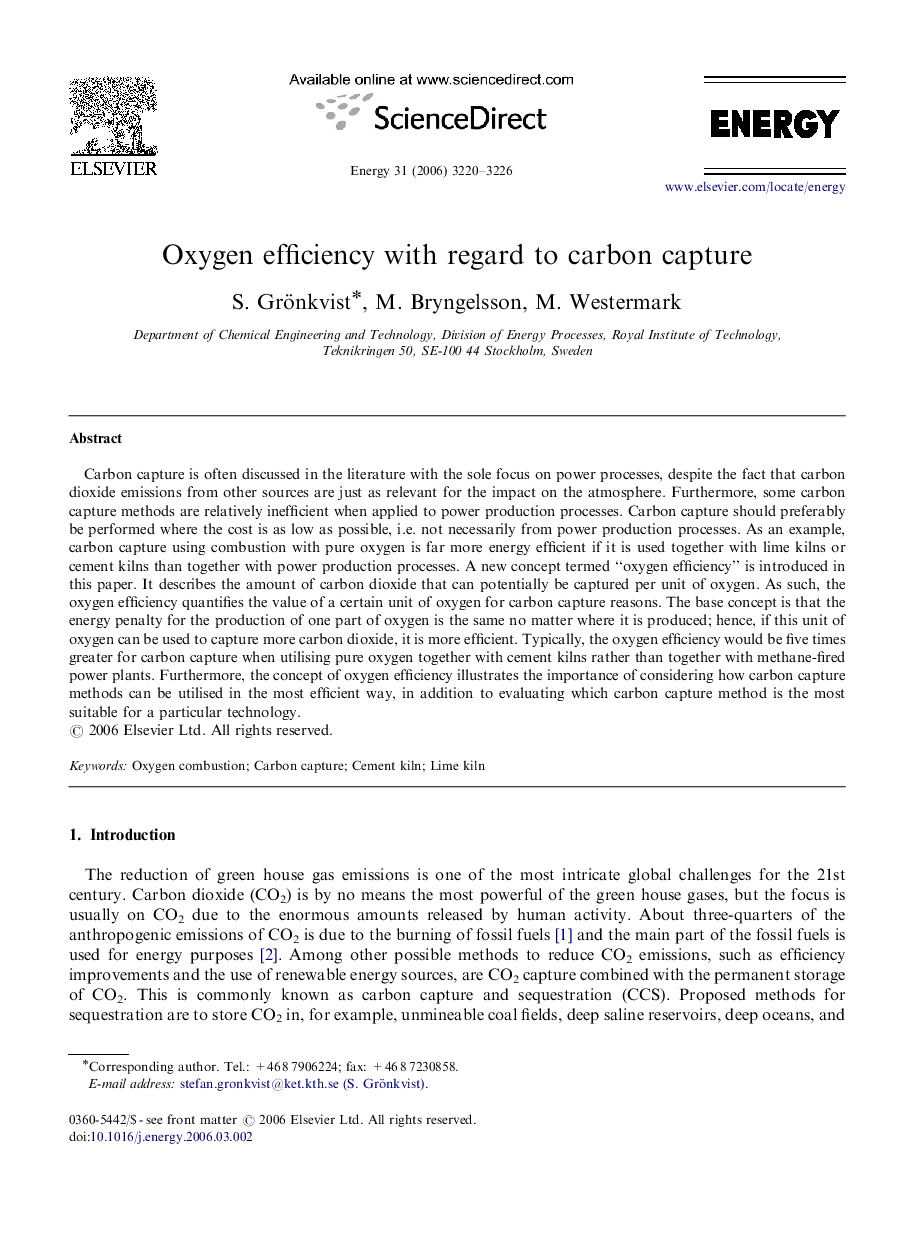| Article ID | Journal | Published Year | Pages | File Type |
|---|---|---|---|---|
| 1736096 | Energy | 2006 | 7 Pages |
Carbon capture is often discussed in the literature with the sole focus on power processes, despite the fact that carbon dioxide emissions from other sources are just as relevant for the impact on the atmosphere. Furthermore, some carbon capture methods are relatively inefficient when applied to power production processes. Carbon capture should preferably be performed where the cost is as low as possible, i.e. not necessarily from power production processes. As an example, carbon capture using combustion with pure oxygen is far more energy efficient if it is used together with lime kilns or cement kilns than together with power production processes. A new concept termed “oxygen efficiency” is introduced in this paper. It describes the amount of carbon dioxide that can potentially be captured per unit of oxygen. As such, the oxygen efficiency quantifies the value of a certain unit of oxygen for carbon capture reasons. The base concept is that the energy penalty for the production of one part of oxygen is the same no matter where it is produced; hence, if this unit of oxygen can be used to capture more carbon dioxide, it is more efficient. Typically, the oxygen efficiency would be five times greater for carbon capture when utilising pure oxygen together with cement kilns rather than together with methane-fired power plants. Furthermore, the concept of oxygen efficiency illustrates the importance of considering how carbon capture methods can be utilised in the most efficient way, in addition to evaluating which carbon capture method is the most suitable for a particular technology.
